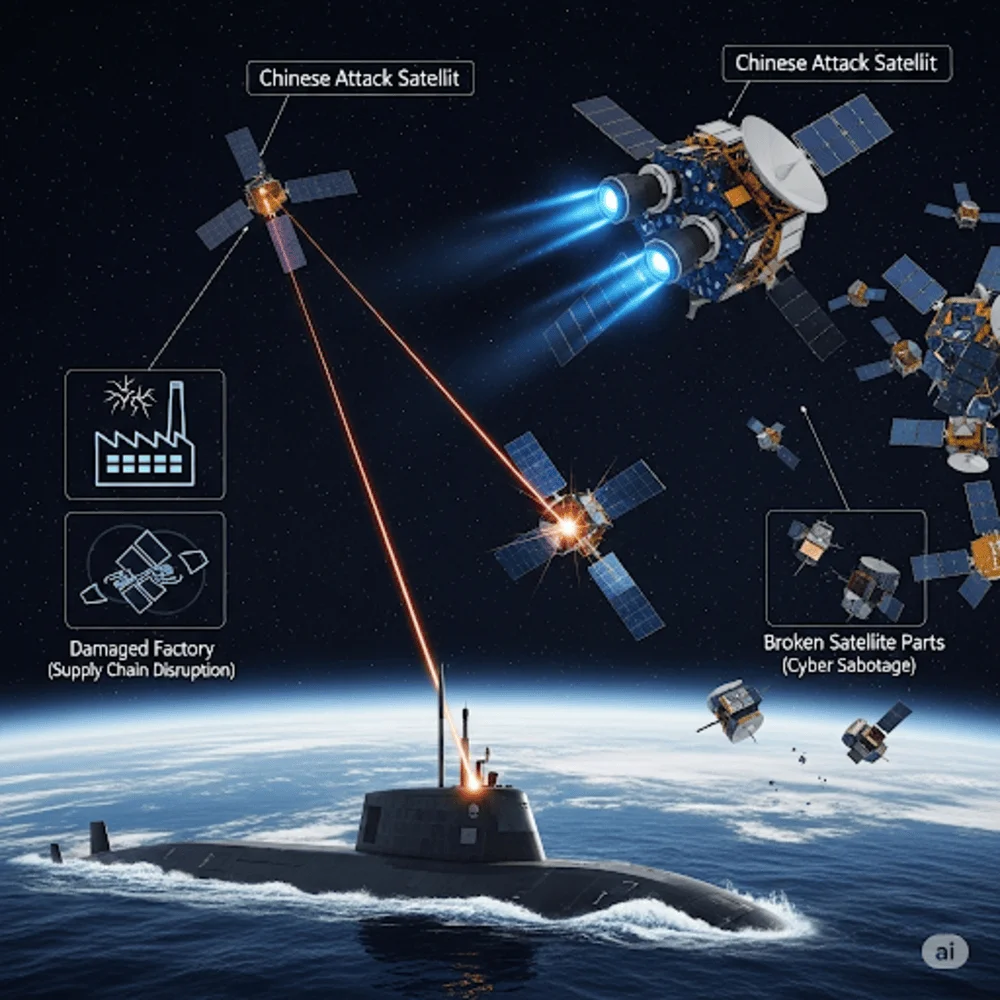In a new report, Chinese government and military researchers have openly acknowledged preparing theoretical measures to target Elon Musk’s Starlink satellite network, seen by Beijing as a growing US-aligned military and intelligence asset.
These researchers have published dozens of academic and defense-linked papers detailing what amounts to a multifaceted counter-space strategy. Their proposed methods include:
- Stealth submarines equipped with directed‑energy lasers capable of targeting Starlink constellations in orbit.
- Custom-built attack satellites using ion-thruster propulsion, designed to trail, intercept, or even physically damage Starlink satellites.
- Sabotage operations targeting Starlink’s supply chain, possibly disrupting production or deployment pipelines.

China’s concern stems from Starlink’s high-speed, low-earth-orbit communications architecture, which analysts say could support U.S. military functions, including battlefield coordination and real‑time surveillance. Its proven impact in Ukraine, enabling drones and units to stay online under duress, has only escalated Beijing’s perception of Starlink as a strategic threat.
The surge in Chinese research began in earnest after the Ukraine war in 2022, with nearly all of the reviewed papers published post-2022, reflecting urgency in countering Starlink’s fast-expanding global footprint. Contributors to those studies include professors from China’s National University of Defense Technology, who warned that as the U.S. integrates Starlink into military systems, countries around the world increasingly view it as a threat across nuclear, space, and cyber domains.
China is also accelerating development of its megaconstellations, such as Guowang (Hulianwang) and Qianfan (Spacesail), aiming to rival Starlink in both scale and strategic autonomy. However, these Chinese projects have faced significant hurdles, including higher satellite failure rates, bureaucratic delays, and slower launch frequencies compared to Starlink’s streamlined deployment.
Though these proposals remain largely theoretical and no kinetic operations have been confirmed, they showcase how deeply space is emerging as a new domain of geopolitical competition. Analysts warn that if China pursues anti-satellite weapons or supply‑chain disruption, the result could be a destabilizing escalation in space warfare capabilities.
The unfolding situation underlines wider concerns: the privatization of critical communications infrastructure, the ability of non-state actors to shape geopolitical events (as seen in Elon Musk’s political engagements), and the challenge nations face in safeguarding sovereignty in space.



